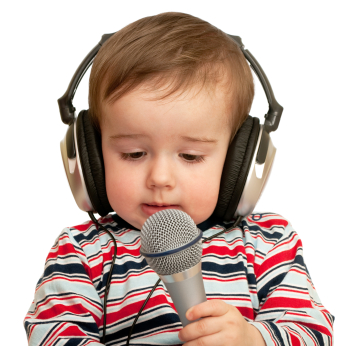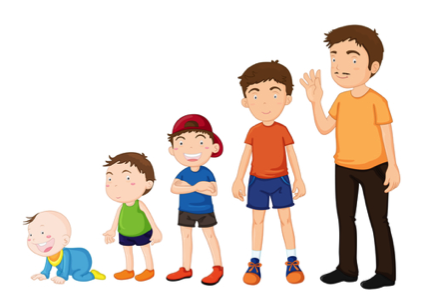At times, speech delay and impairment is caused by a physical disruption in the mouth such as a deformed frenulum, lips, or palate. If the motion or ability to form words and appropriate sounds is disrupted, the child may be slow to pick up words and lack the ability to shape their mouth and tongue in the formation of words. Other more serious concerns are those that can be caused by oral-motor issues.Oral-motor dysfunction refers to a lack or delay in the area of the brain that speech is formed and created and communicated to the mouth and tongue. While speech may be the only concern, this disorder can be highlighted with feeding issues as well.Your son is 2 years old and still isn’t talking.
He says a few words, but compared with his peers you think he’s way behind. You remember that his sister could put whole sentences together at the same age. Hoping he will catch up, you postpone seeking professional advice. Some kids are early walkers and some are early talkers, you tell yourself.Children with CAS have problems saying sounds, syllables, and words. This is not because of muscle weakness or paralysis. The brain has problems planning to move the body parts (e.g., lips, jaw, tongue) needed for speech. Speech, as distinct from language, refers to the actual process of making sounds, using such organs and structures as the lungs, vocal cords, mouth, tongue, teeth, etc
Therapies and treatments: After the initial diagnosis of speech delay, a hearing test will be administered to ensure that hearing loss or deafness is not an underlying cause of the delay.If a child has successfully completed the hearing test, the therapy or therapies used will be determined. There are many therapies available for children that have been diagnosed with a speech delay, and for every child, the treatment and therapies needed vary with the degree, severity, and cause of the delay. While speech therapy is the most common form of intervention, many children may benefit from additional help from occupational and physical therapies as well. A holistic method, developed and perfected by Maria Summer in Rankweil Austria, is designed for quick and effective speech induction, treatment of disorders of speech, voice, breathing and learning, in approximately 60 sessions. Simple myokinetic exercises, relaxation techniques, rhythmic breathing tricks, challenge speech in sluggish lethargic children.Physical and occupational therapies can be used for a child that is suffering from speech delay due to physical malformations and children that have also been diagnosed with a developmental delay such as autism or a language processing delay. Children that have been identified with hearing loss can be taught simple sign language to build and improve their vocabulary in addition to attending speech therapy. The parents of a delayed child are the first and most important tool in helping overcome the speech delay.The parent or caregiver of the child can provide the following activities at home, in addition to the techniques suggested by a speech therapist, to positively influence the growth of speech and vocabulary. Reading to the child regularly .Use of questions and simple, clear language.Positive reinforcement in addition to patience
Communication skills: To have a better understanding of a child’s communication skills parents, teachers, speech therapists and language therapists have a greater chance of collecting data that will determine in which area the child needs to be assessed. Children with speech difficulties range from a variety of communication skills the most common would be literacy and psychosocial and improving the child’s skill can enhance their communication. It all starts with the child and their guardians at home. There are several factor that contribute in their speech such as: Waiting until the child has finished speaking ,Correcting a child excessively is a NO, Approach them as a communicator partner , Be an appropriate speaking model , Exposing the child to literature , Having the television off , Asking questions ,Repetition of words , Drawing explanations and conclusions ,Telling the child they did a good job.
If your child is not on track with the following speech/language development milestones, you should talk to your pediatrician.
Here are the milestones to look for in normal speech development:
| Age | Language Level |
| Birth | Cries |
| 2-3 months | Cries differently in different circumstances; coos in response to you |
| 3-4 months | Babbles randomly |
| 5-6 months | Babbles rhythmically |
| 6-11 months | Babbles in imitation of real speech, with expression |
| 12 months | Says 1-2 words; recognizes name; imitates familiar sounds; understands simple instructions |
| 18 months | Uses 5-20 words, including names |
| Between 1 and 2 years | Says 2-word sentences; vocabulary is growing; waves goodbye; makes “sounds” of familiar animals; uses words (like “more”) to make wants known; understands “no” |
| Between 2 and 3 years | Identifies body parts; calls self “me” instead of name; combines nouns and verbs; has a 450 word vocabulary; uses short sentences; matches 3-4 colors, knows big and little; likes to hear same story repeated; forms some plurals |
| Between 3 and 4 years | Can tell a story; sentence length of 4-5 words; vocabulary of about 1000 words; knows last name, name of street, several nursery rhymes |
| Between 4 and 5 years | Sentence length of 4-5 words; uses past tense; vocabulary of about 1500 words; identifies colors, shapes; asks many questions like “why?” and “who?” |
| Between 5 and 6 years | Sentence length of 5-6 words; vocabulary of about 2000 words; can tell you what objects are made of; knows spatial relations (like “on top” and “far”); knows address; understands same and different; identifies a penny, nickel and dime; counts ten things; knows right and left hand; uses all types of sentences |




5